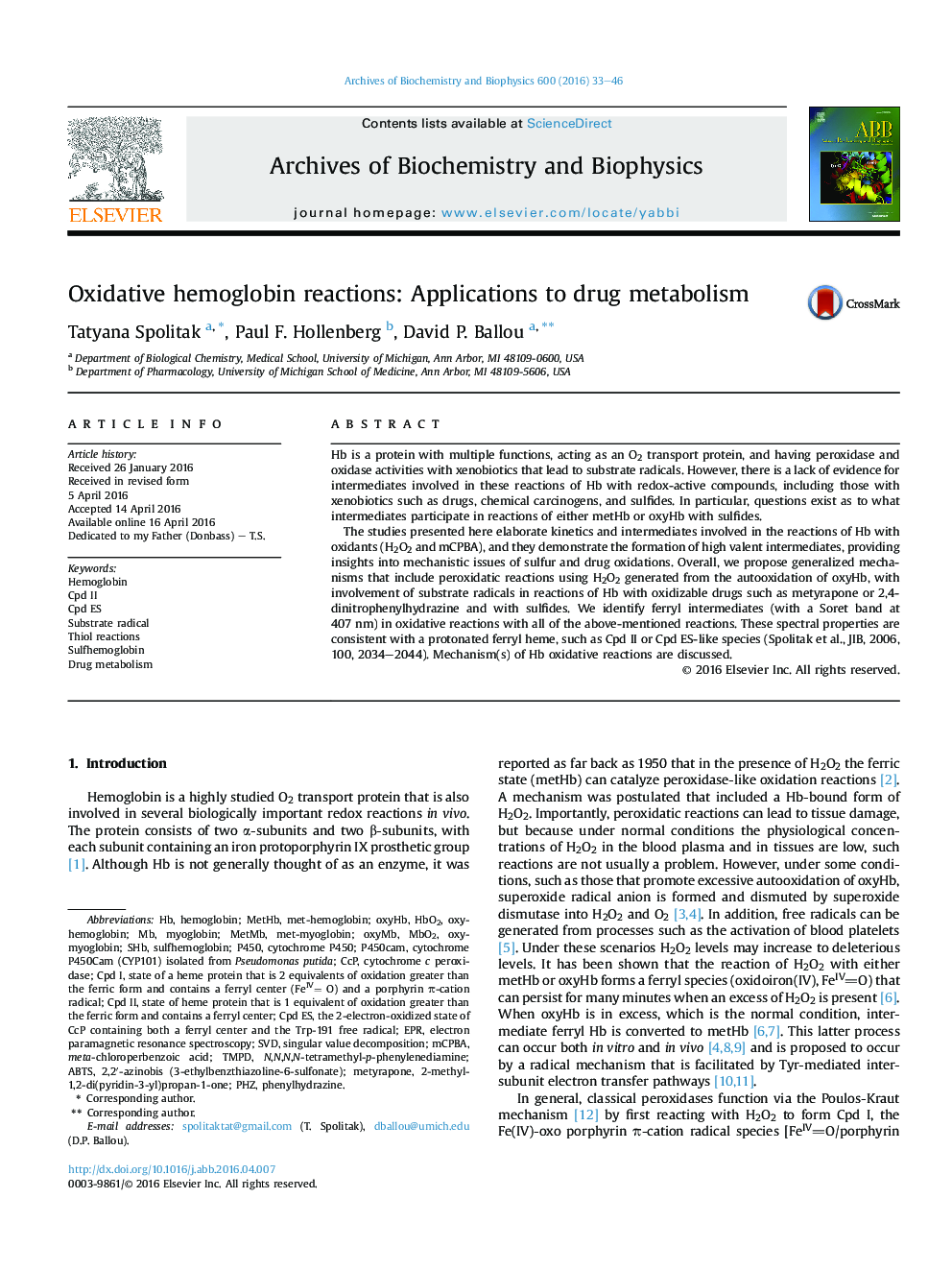| Article ID | Journal | Published Year | Pages | File Type |
|---|---|---|---|---|
| 1924718 | Archives of Biochemistry and Biophysics | 2016 | 14 Pages |
•Ferryl species of Hb were identified in aerobic reactions with sulfides and drugs.•Cpd ES and Cpd II species were involved in these reactions.•Drug-induced autooxidation of oxyHb was observed.•This autooxidation with sulfides and drugs leads to peroxidatic reactions.
Hb is a protein with multiple functions, acting as an O2 transport protein, and having peroxidase and oxidase activities with xenobiotics that lead to substrate radicals. However, there is a lack of evidence for intermediates involved in these reactions of Hb with redox-active compounds, including those with xenobiotics such as drugs, chemical carcinogens, and sulfides. In particular, questions exist as to what intermediates participate in reactions of either metHb or oxyHb with sulfides.The studies presented here elaborate kinetics and intermediates involved in the reactions of Hb with oxidants (H2O2 and mCPBA), and they demonstrate the formation of high valent intermediates, providing insights into mechanistic issues of sulfur and drug oxidations. Overall, we propose generalized mechanisms that include peroxidatic reactions using H2O2 generated from the autooxidation of oxyHb, with involvement of substrate radicals in reactions of Hb with oxidizable drugs such as metyrapone or 2,4-dinitrophenylhydrazine and with sulfides. We identify ferryl intermediates (with a Soret band at 407 nm) in oxidative reactions with all of the above-mentioned reactions. These spectral properties are consistent with a protonated ferryl heme, such as Cpd II or Cpd ES-like species (Spolitak et al., JIB, 2006, 100, 2034–2044). Mechanism(s) of Hb oxidative reactions are discussed.
Graphical abstractFigure optionsDownload full-size imageDownload high-quality image (111 K)Download as PowerPoint slide
